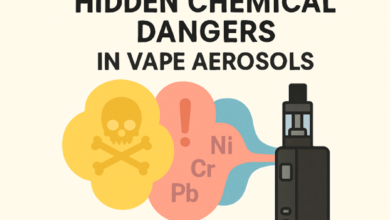Securing Sick Leave: What You Need to Know for a Quick Approval

Everyone needs a break from work due to illness at some point. However, securing quick approval for sick leave requires knowing the proper steps and documents. Understanding how to submit a convincing sick leave application can make the process smoother and faster. Taking the right approach ensures you can focus on recovery without added stress.
Get a Medical Certificate
A medical certificate for a work certificate is usually required to approve it. This document serves as proof that an individual is genuinely unfit for work. In many workplaces, this certificate is crucial to verifying a valid reason for absence.
It’s essential to understand what this certificate should include. It must state the diagnosis, duration of rest, and physician’s recommendations. Employers rely on these details to determine the length and approval of it.
See also: Effective Pest Removal in Virginia: Protect Your Home and Health
Ensure Your Sick Leave Application is Clear and Concise
Clarity and conciseness are vital when applying. The application should begin by stating the reason for the absence, using simple language and clear intent. It’s also wise to mention when you first noticed the symptoms of the illness, showing your proactive approach to seeking medical help.
Adding the expected duration of absence to your application helps your employer plan for work adjustments. Applying the correct format improves its chances of approval, especially if your organisation requires a specific template.
Use Proper Channels for Submitting Your Sick Leave Request
Submitting the request is as crucial as drafting it well. Most organisations have clear guidelines for applying for leave, which may involve emailing, using internal HR software, or physically handing in a request. Remember these guidelines precisely, as improper submission may delay your approval.
Email applications often require attaching the medical certificate, so double-check that it’s included before sending. If your workplace uses HR software, follow each step to upload documents and add the required information.
Know the Company’s Sick Leave Policy
Familiarising yourself with your employer’s policy is essential for a smooth approval process. Every organisation has specific guidelines about the maximum number of days allowed for sick leave, documentation requirements, and acceptable conditions. Some policies also outline different types of leave, such as short-term or long-term medical leave. Knowing your options lets you choose the correct leave type, avoiding rejection or resubmission.
Communicate Clearly with Supervisors and HR
Once you submit your application, proactive communication is critical to speeding up approval. Informing your supervisor about your condition and absence timeline builds transparency and understanding. Additionally, communicating with HR can clarify any questions about the documentation or timing.
Some employers may have additional queries about your sick leave, and providing prompt responses can minimise approval delays. By keeping open communication channels, you reassure your team of your dedication to resuming work as soon as possible.
Follow Up if Necessary to Ensure Approval
After submitting your sick leave request, following up is helpful if you haven’t received confirmation within a reasonable timeframe. Sometimes, documents can get misplaced or overlooked, especially in large organisations. A polite follow-up with HR or your supervisor shows responsibility and helps you confirm that your request is being processed.
It’s also an opportunity to address any questions or concerns about your application and ensure all requirements are met. Following up can provide peace of mind, allowing you to concentrate on your recovery. By staying proactive, you demonstrate commitment and professionalism even while away.
Securing approval for sick leave is often easier with accurate documentation. A well-prepared medical certificate for a work certificate significantly boosts approval chances, as it provides essential verification. Remember that thoroughness and attention to detail make the process smoother for everyone involved.




